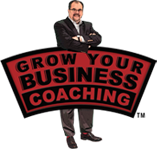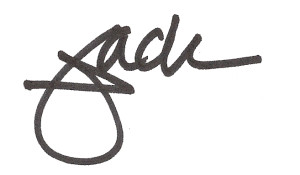The One Thing That Will Truly Transform Your Life
The end of the year is nearing and while many are thinking about finishing out the year and holiday festivities, most of the small business owners I know are already thinking about 2017.
- Where will they find new opportunities?
- How will they change things to improve the bottom line, number of clients, or streamline processes?
- What goals are appropriate, realistic, and yet pushing the limits?
It’s all about the exciting potential of a fresh new year – a new starting point.
While we look at it that way, we bring lots of “old stuff” into the new space and end up with a lot of the same results and same challenges. Now, I am not trying to squash your excitement or enthusiasm – not in the least.
I just want to offer you, just like I do my coaching clients, the opportunity to adjust perspective – for different results, better results than you have ever gotten before.
Don’t do that, do this …
Oftentimes, in order to get different results we decide to change something we “DO.” And that’s a good thing because we can get different results when we do things differently. When we approach change that way, however, it takes a great deal of effort and conscious energy.
For instance, if we want to be more approachable, we decide to be more engaging at networking events. We talk more, smile more, laugh more and ask more, and better, questions. Now, if that is not our norm, it can be exhausting. And you have to re-engage the behavior every
time you go to a networking event. Because networking is probably something you don’t necessarily do every day, it never really becomes your automatic behavior – you have to think about it and employ the “tactic” every single time.
Now while that will probably give you better results, it taps your brain’s “attention units” and your physical energy.
There’s another way – one that will get to the roots of your behavior and help you make changes that can become automatic and a new “norm” for you.
Every behavior is rooted in your beliefs.
That’s right, everything you do, every reaction you have, every decision you make is rooted – firmly – in your beliefs. So the only way to make real change that sticks is to identify the belief that drives the behavior you want to change.
Let me share a story from Hyrum W. Smith, author of The 3 Gaps:
John walks into the yard of a friend, and is surprised to see a Doberman pinscher that has never been there before. At first he freezes in terror; then he runs out of the yard as fast as his legs can carry him without pausing to wonder how the dog got there or to notice if it is on a chain.
Later, Susan walks into the same yard. She is just as surprised as John to be greeted by a Doberman. Her reaction, however, is to squeal with delight, “Oh! How cute!” She runs toward the dog so she can pet it and scratch it behind its ears.
Why such different reactions to the same dog? It’s all about what Smith calls the Belief Window.
Each person looks out at the world through their Belief Window and reacts to the environment based on the beliefs that they have. Obviously John and Susan have very different beliefs when it comes to the dog.
Where do our beliefs come from?

Beliefs are accumulated throughout life from what we have been told, have learned, and what we have experienced. Our beliefs are very often tinged with emotions, which are very strong drivers of behavior: fear, love, anger, desire. Our beliefs generally fall into one of three categories:
- Reflections of natural law or reality: vegetables are good for people; the earth revolves around the sun
- Reflections of personal values: financial stability and independence is important; It’s best to treat people with respect and kindness
- Subjective judgment or matter of opinion: hummus doesn’t taste good; Apple devices are best
Some of these beliefs can be backed up scientifically, some cannot. But the thing is that it doesn’t matter, because simply because we believe them to be true, we will act as if they are true.
I agree with Smith, and in my opinion, our beliefs fall into one of three categories: correct, incorrect or debatable. Please note that these terms do not imply any judgment – good or bad, positive or negative.
Correct beliefs generally produce positive results and the inverse is that incorrect beliefs produce results we don’t want. With that in mind, the best way to change outcomes that you do not want is to change the belief that drives that outcome. When you change a belief, your behavior will change automatically to reflect your belief.
Negative outcomes produce the stress and emotional pain we feel. Negative results produce relationship disruptions and employment disappointments we experience.
So, yes, while we can consciously change behaviors to get different results, to make long-lasting change that doesn’t produce those nasty feelings and experiences, changing the root belief that drives the behavior is the way to go.
Why do we latch on to beliefs?
Smith says that all of our beliefs and behaviors are designed to meet basic needs that are common to us all; needs such as the need to live (survival), the need to love and be loved (relationship), the need to feel important (have value), and the need for variety. If we are not meeting those needs, we will feel pain in some way or another.
John’s reaction to the dog was meeting his need for survival; Susan’s was fulfilling her need to love and be loved. While our beliefs are based on meeting our needs, we don’t always adopt a correct belief to meet a need because we misinterpret events, believe something we have been told, or have had a bad experience.
The only way to tell if a belief is correct or incorrect for us is to pay attention to the results and determine if the results of a behavior are what we do – or don’t – want. And that takes time – to identify the belief and then measure the outcomes over time. What could appear to meet your needs and make you happy once may not stand the test of time.
For example, the use and abuse of alcohol. If you believe that having a beer or glass of wine relaxes you and makes you more social, you may try that a few times. But what works in a one-time situation takes on a whole different dimension when repeated over time.
It’s all up to you
Smith sums it up concisely:
You can choose to believe whatever you wish; just remember that your beliefs drive your behavior. A correct belief will lead to good results – results that are positive and beneficial to you… An incorrect belief will lead to bad results – results that are negative or damaging to you. It will not meet your needs over time. It is as simple as that.
Adjusting your beliefs is the only true way to change behavior that will get you the results you want in your business and in your life.
Next week I am going to provide you with a step-by-step approach to identifying and adjusting incorrect beliefs you have in your Belief Window. I want you to have the most powerful tool possible to make 2017 the start of something great for you!
To your success!






Leave a Reply